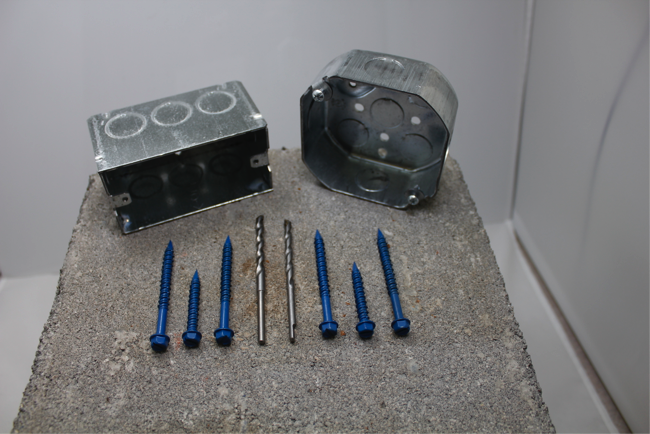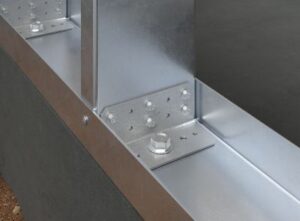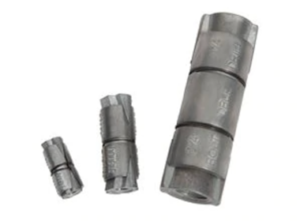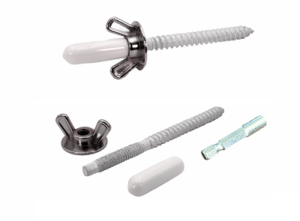Below are some common reasons why Tapcons break during the installation process.
#1: Generic Tapcon
Just because a concrete screw is blue doesn’t mean that it is a genuine Tapcon. Tapcon is the brand name for the original concrete screw and is manufactured in the United States. Many companies sell concrete screws but they are not Tapcons. In most cases, these screws are simply imported than painted blue to look like Tapcons.
Solution:
Get rid of generic concrete screws and purchase Tapcon brand concrete screws. This should solve this problem.
#2: Wrong Application for Tapcons
Tapcons work in most applications, but as with all concrete fasteners, they may not work in all applications all the time. If the material is too abrasive and the lead thread is worn down during installation, the Tapcon screw will stop tapping threads. This continued torquing of the screw can shear the Tapcon in half.
Solution:
Find another concrete fastener to use such as a hammer drive or split drive concrete anchor.
#3: Drill Being Used for Tapcons
Hole tolerance, shape, and consistency are critically important for the proper installation of Tapcons. A standard rotation drill will not make a correct hole on a consistent basis and should not be used when drilling holes in concrete, brick or block. These concrete screws may penetrate the hole and then get stuck. Adding torque at this point in the installation process may shear or break the Tapcon.
Solution:
Use a hammer drill when drilling holes for Tapcon anchors. A hammer drill must be used when drilling holes into concrete, brick or block. The holes will be correct and the hammer drill will easily cut through the base material.
#4: Diameter of Hole for Tapcons
Hole diameter is critical for the proper installation of Tapcons. The tolerance between the concrete screw and the hole size is also critical for proper installation. Each diameter of Tapcon has a specific drill bit diameter that must be used and the bit must meet ANSI standards as well. Carbide tipped bits can wear down as they are used and this can decrease the diameter of the hole being drilled, especially in abrasive material such as brick.
Solution:
Make sure that the drill bit being used is not worn out, meets ANSI standards and is being used in a hammer drill.
#5: Depth of Hole for Tapcons
The depth of the hole for a Tapcon should be a minimum of 1/2″ deeper into the base material than the screw will penetrate. This allows space for the material created during the installation process. Also, this will ensure that the Tapcons do not bottom out before the head is seated against the fixture being installed. If the Tapcon screw bottoms out in the hole before it is fully inserted and too much torque is applied, the Tapcon may break or shear off.
Solution:
Make sure that the hole is drilled a minimum of 1/2″ longer. Do this by using the depth gauge on the hammer drill. You can also put a piece of tape on the bit at the proper embedment depth.
#6: Clean Hole for Tapcons
Dust is created during the hole drilling process and must be cleaned out of the hole before the screw is used to tap threads in the base material. The dust can build up and create a situation where the screw is unable to be fully inserted in the hole. Then, if too much torque is applied, the Tapcon screw may break of shear off.
Solution:
The hole must be cleaned of all dust debris. Do this by using a wire brush and a vacuum, compressed air or a blow-out-bulb.
#7: Length of Tapcon
Tapcons should be embedded a minimum of 1″ and a maximum of 1-3/4″ into the base material. If the screw is embedded into the material deeper than 1-3/4″, it may break or shear off. 1-3/4″is the maximum embedment- in harder, more abrasive base materials, the closer the screw gets to this maximum, the more likely the screw may break or shear. The lead thread of one of these screws do all of the cutting of the base material and may lose its ability to cut if it is installed deeper than the maximum embedment or close to the maximum embedment in more abrasive materials.
Solution:
To determine the shortest length of Tapcon that can be used, add the thickness of the material being fastened to the minimum embedment of 1″. This will provide the size of the shortest screw that can be used. To determine the longest Tapcon that can be used, add the thickness of the material to be fastened to the maximum embedment of 1-3/4″. These two formulas will give you the minimum and maximum length of Tapcons to use for any particular application.
The seven common reasons why Tapcons break outlined above explain potential causes for Tapcons to break during installation. Tapcons are strong concrete screws that can be used in numerous applications. However, they must be used and installed properly to ensure that they don’t break or shear off during your project. By following the solutions offered above, Tapcon installations can be a smooth and simple process.
About Concrete Fastening Systems Inc.
Concrete Fastening Systems Inc. has been selling concrete fasteners for over 30 years. The company keeps a fully stocked warehouse in Cleveland, Ohio. Free, same-day shipping in every length and diameter is available by ordering at www.confast.com















